- Face plate with one or more RJ45 port(s) and one or more TV port(s)
- Face plate with a RJ45 port, RJ11 port and a TV port
- Face plate with a RJ45 port, a RJ11 port, as well as an electrical socket and switch

Share Various Fiber Optic Telecom Network Topics, Information, News, Questions, Sources and Network Solutions.

As data centers and enterprises strive to future proof their infrastructures while maximizing their current networks, the flexibility of true dual-rate compliant interfaces eases the transition to higher Gigabit Ethernet systems. This is why the dual-rate optical transceiver has emerged (e.g. Finisar FTLX8571D3BCV and FTLX1471D3BCV). And today, I'd like to talk something about the dual-rate optical transceiver, particularly the 1G/10G dual-rate SFP+.
The following figure shows Finisar FTLX8571D3BCV compatible 1G/10G Dual-Rate SFP+ optical transceiver
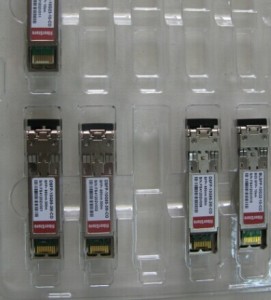
As its name suggests, dual-rate optical transceiver is a kind of optical transceiver which can support two different data rates. With the dual-rate optical transceiver, users can achieve the full forward and backward compatibility of their systems with a low cost. The common dual-rate optical transceivers in the today's market is the 1G/10G dual-rate SFP+ transceiver. They are compatible with either 10 Gigabit Ethernet or 1 Gigabit Ethernet fiber interface. There are many different vendors to supply the 1G/10G dual-rate SFP+, but the standards and protocols which they complied with are the same. In general, the 1G/10G dual-rate SFP+ are designed for use in 1 Gigabit and 10 Gigabit Ethernet links over single-mode or multi-mode fiber. They are compliant with SFF-8431, IEEE 802.3-2005 10GBASE-SR/SW, 10GBASE-LR and 1000BASE-SX, 1000BASE-LX. In addition, similar to most modern optical transceivers, digital diagnostics monitoring (DDM) or digital optical monitoring (DOM) functions are also available in the dual-rate SFP+, so that users can monitor many parameters of the transceiver module in real-time. Actually, with the development of technology and the increasing demands on higher Gigabit Ethernet, there are other dual-rate optical transceivers with different package styles or even at different data rates except the 1G/10G dual-rate SFP+, eg. Multi-rate XFP.
In my opinions, the emergence of dual-rate optical transceiver is mostly because of the cost consideration. From 1G to 10G, 10G to 40G, 40G to 100G, and even higher data rate, it means that the development of Gigabit Ethernet is very fast. In other words, the cost of updating the equipment keeps adding up over time. Dual-rate optical transceiver is a cost-effective solution to solve this question. For example, a 1G/10G dual-rate SFP+ can be used in both 1 Gigabit Ethernet and 10 Gigabit Ethernet links which eases the transition from 1Gb/s to 10Gb/s systems. Users can configure to operate the dual-rate optical transceivers at 1GbE or 10GbE in a switch with 10G SFP+ ports and 1G/10GSFP+ ports, but not native 1G SFP ports. And do not have to spend extra cost in buying optical transceivers only support 1G or 10G Ethernet. Of course, if you only need one type of Gigabit Ethernet, you do not need to use the dual-rate optical transceiver. So, at this time, the more cost-effective choice is to buy a corresponding single-rate optical transceiver. Nowadays, 10G Ethernet is the most commonly used type of Ethernet as the 40G and 100G are still developing. Thus, the market of 1G/10G dual-rate SFP+ is not so popular as its first emergence. But it is still applied in 1000BASE-SX 1G Ethernet, 1000BASE-LX 1G Ethernet, 10GBASE-SR/SW 10G Ethernet and 10GBASE-LR 10G Ethernet as a cost-effective solution for 1G/10G Ethernet.
From this paper, you may have an understanding of the dual-rate optical transceiver. No matter you are very familiar with the dual-rate optical transceiver or have no idea of it, I really hope that this paper is useful for you. Of course due to the limited knowledge of me, there may be some inevitable errors and omissions existing in this paper. If it is not appropriate, your critical comments are highly appreciated.
Read more articles about optical transceiver, go to click: Fiber Transceiver Solution blog
Aerial fiber optic cables are an essential part of the optical communication networks. They are commonly used in our daily life, like hanging in the pole at the front of our house. How much do you know about the aerial fiber cables? This article can help you learn more about them.
As the aerial fiber optic cables are exposed in the outdoor environment, they have to be made of material which is different to the conventional fiber optic cables to withstand windy, rainy, icy and snowy weathers. What's more, the installation method is different from other cables. Therefore, there are different types of aerial fiber cables.
By installation methods, aerial fiber optic cables can be generally classified as two types: catenary wire and self-supporting. Catenary Wire Aerial Cable is regular outdoor loose tube cables that can utilize the existing overhead pole line to install that saves more in construction costs and shortens the construction period. Self-Supporting Aerial Cable, or All-Dielectric Self-Supporting (ADSS) cable, has cable bonded to an insulated steel or all-dielectric messenger for support. ADSS cables are usually made of heavier jackets and stronger metal or aramid strength members. Nowadays, the self-supporting aerial fiber optic cables are more widely used by people. And the most commonly used ADSS cables are figure-8 aerial cable.

Figure-8 aerial cable greatly simplifies the task of placing fiber optic cable on an aerial plant. It incorporates both a steel messenger and the core of a standard optical fiber cable into a single jacket of "Figure-8" cross-section. The combination of strand and optical fiber into a single cable allows rapid one-step installation and results in a more durable aerial plant. Figure 8 cable is commonly used between the poles in the outdoor.

Figure-8 Aerial Cable
There is also another type of fiber optic cable, the intersecting face of which showing the figure of 8, that is fiber optic drop cable. You should not confound them together.
With the emergence of access networks, including fiber to the business, fiber to the home and fiber to the premises, referred to collectively as FTTx, the demands of new optimized products to meet increasing bandwidth needs are daily increased. One such product is optical drop cable. The conventional drop cable consists of two parallel reinforced core and an optical fiber in the middle of them. The intersecting surface present the figure of 8. Fiber drop cable is widely used in the FTTH networks.
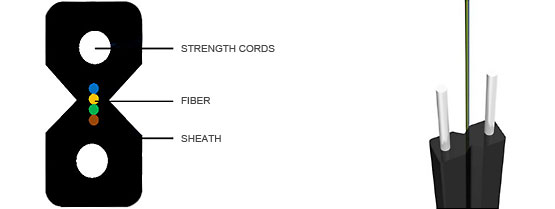
FTTH Indoor Drop Cable
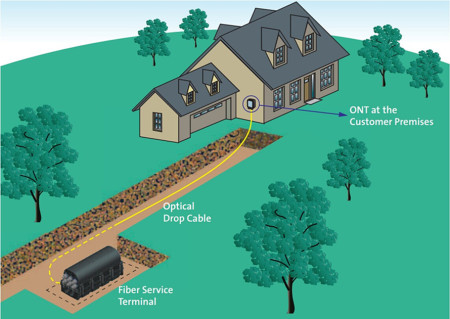
Add a thick steel wire line to the conventional drop cable, the self-supporting drop cable is formed. Self- supporting drop cable has a stronger tensile strength because of its metal hanging units. Therefore, we can also call it aerial drop cable. The aerial drop cable is designed to run from the distribution point to the subscriber. The metal unit will be clipped before entering to the subscriber. The biggest problem for aerial drop cable is that it's more expensive than conventional drop cables.
FTTH Aerial Drop Cable
Marketing: Fiberstore supplies figure 8 areial cables, FTTH Indoor Cable, FTTH Drop Cable, FTTH Duct Armored Cable, etc. In order to cut inventory costs and speed up the installation process for our customers, Fiberstore's FTTH cable designs can simplify your project.
Article Source: How Much do you Know about Aerial Fiber Optic Cables?
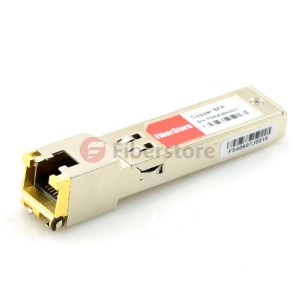
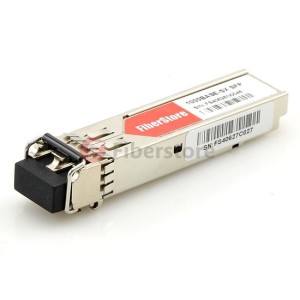
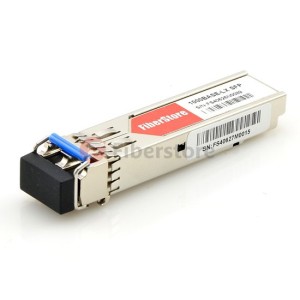

We usually see LX SFP, LH SFP and LX/LH SFP on many websites, and many people show their confusion about them. Whether they are the same or different? If they are dissimilar, what differences between them on earth?
The Commonly Used 1000BASE-X Standards about Ethernet
Ethernet was the result of the research done at Xerox PARC in the early 1970s. Ethernet later evolved into a widely implemented physical and link layer protocol. Fast Ethernet increased speed from 10 to 100 megabits per second (Mbit/s). Gigabit Ethernet was the next iteration, increasing the speed to 1000 Mbit/s. The initial standard for Gigabit Ethernet was produced by the IEEE in June 1998 as IEEE 802.3z, and required optical fiber. 802.3z is commonly referred to as 1000BASE-X, which is used in industry to refer to Gigabit Ethernet transmission over fiber, where options include 1000BASE-SX, 1000BASE-LX, 1000BASE-LX10, 1000BASE-BX10 or the non-standard -EX and -ZX implementation.
Gigabit Ethernet 1000BASE-LX Optical Interface Specifications
 1000BASE-LX is a fiber optic Gigabit Ethernet standard specified in IEEE 802.3 Clause 38 which uses a long wavelength laser (1,270–1,355nm). The 1000BASE-LX SFP is specified to work over a distance of up to 5km over single mode fiber and it can also run over all common types of multi mode fiber with a maximum segment length of 550m. For link distances greater than 300m, you must install a mode-conditioning patch cord between the transceiver and the MMF cable on both ends of the link.
1000BASE-LX is a fiber optic Gigabit Ethernet standard specified in IEEE 802.3 Clause 38 which uses a long wavelength laser (1,270–1,355nm). The 1000BASE-LX SFP is specified to work over a distance of up to 5km over single mode fiber and it can also run over all common types of multi mode fiber with a maximum segment length of 550m. For link distances greater than 300m, you must install a mode-conditioning patch cord between the transceiver and the MMF cable on both ends of the link.
1000BASE-LH and 1000BASE-LX/LH Optical Interface Specifications
LH refers to Long Haul. Many vendors use both LH and LX/LH for certain SFP modules, but they aren’t a Gigabit Ethernet standard at all. 1000BASE-LX/LH SFP can achieve a distance up to 25km over single mode fiber. Unlike 1000BASE-LX/LH SFP, 1000BASE-LH SFP operates a distance up to 70km over single mode fiber.
Conclusion
In a word, the 1000BASE-LX, 1000BASE-LH and 1000BASE-LX/LH are all refer to Gigabit Ethernet transmission. Among them, the 1000BASE-LX is a standard, the 1000BASE-LH and 1000BASE-LX/LH just are terms widely used by vendors. Other long haul transmission standards include 1000BASE-LX10, 1000BASE-EX and 1000BASE-ZX. We can see their differences more clearly in the following chart:
| Name | Medium | wavelength | Specified distance |
| 1000BASE-LX/LH | 9/125 Single mode fiber | 1310nm | 10km |
| 1000BASE-LX | 62.5/125, 50/125 Multi mode fiber | 1310nm | 550m |
| 1000BASE-LX10 | 9/125 Single mode fiber | 1310nm | 10km |
| 1000BASE-LH | 9/125 Single mode fiber | 1310nm | 25~70km |
| 1000BASE-EX | 9/125 Single mode fiber | 1310nm | 40km |
| 1000BASE-ZX | 9/125 Single mode fiber | 1550nm | 70km |
Fiberstore is a professional OEM manufacturer and supplier of optical networking solutions. Fiberstore's 1000BASE-LX SFP and 1000BASE-LX/LH SFP is 100% compatible with major brands like Cisco, HP, Juniper, Nortel, D-link, Netgear and Brocade. We can see the order information clearly in the following chart:
| Brand | Models | Description |
| Fiberstore | SFP-1G31-10-xx
|
1.25Gbps 1000BASE-LX/LH SFP 1310nm 10km SMF |
| Cisco | GLC-LX-SM-RGD | Cisco GLC-LX-SM-RGD Compatible 1000BASE-LX/LH SFP 1310nm 10km IND |
| D-Link | DEM-310GT | D-Link DEM-310GT Compatible 1000BASE-LX SFP 1310nm 10km SMF |
| HP | J4859C | HP J4859C Compatible 1000BASE-LX SFP 1310nm 10km SMF |
| HP | JD119B | HP JD119B X120 Compatible 1000BASE-LX SFP 1310nm 10km SMF |
| Netgear | AGM732F | Netgear AGM732F Compatible 1000BASE-LX SFP 1310nm 10km SMF |
| Brocade | E1MG-LX-OM | Brocade E1MG-LX-OM Compatible 1000BASE-LX SFP 1310nm 10km DDM SMF |
| Brocade | E1MG-LX-OM-T | Brocade E1MG-LX-OM-T Compatible 1000BASE-LX SFP 1310nm 10km DDM IND |
| Linksys | MGBLX1 | Linksys MGBLX1 Compatible 1000BASE-LX SFP SMF |
Wall plates that you see every day, in just about every room, but you think about them not very often. There is a good chance you are not aware of the sheer variety of options out there when it comes to customizing your wall plates. Everyone knows about the traditional electrical wall plate, but that's just the tip of the iceberg. There are telephone wall plates, gang wall plates, RJ45 face plate and keystone wall plates, among other A/V and data options. There are fiber optic wall plate and network face plate that are customizable in pretty much any way you can think of. This paper can give you a comprehensive understanding of wall plates.
Introduction of Wall Plates
Wall plate, or wallplate, is a highly configurable wall plate outlet products, available in both single-gang and double-gang configurations. It is designed for use within Fiber-To-The-Desk (FTTD) applications but may also be used to connect telephones and other peripherals to a network.
Wall plates protect electrical outlets and accommodate a variety of cabling solutions such as coaxial, twisted pair, fiber, and HDMI cables. Wall plates protect your network by keeping your connections safe from dust, physical damage, and foreign objects. The following figure shows us a RJ45 wall plate.
A variety of fiber and copper adapters may be loaded in the wall plate outlet in any configuration. These adapters may be purchased individually or preloaded into the wall plate outlet. The wall plate outlet is also available with angled faces that allow fiber connectors and jumpers(i.e. fiber patch cables/cords) to easily transition and exit down the wall, a 4 port wall plate (4-Port SC interface) as shown in the figure below.

According to different networks, there are mainly two types of wall plates: fiber optic network wall plates, copper network wall plates.
Fiber Optic Network Wall Plates
Fiber optic network wall plates, or fiber optic wall plates, are wall plates that designed to bring fiber to the desk and widely used in multi-floor and high building, including bevel fiber optic wall plates with 45° adapter plug-in/out angle and hybrid fiber optic wall plates/outlets. The wall plates are available with LC, SC, ST, FC adapters. They can be applied in FTTH access, telecommunication, CATV, data communication networks etc.
Copper Network Wall Plates
Copper network wall plates, or network faceplates and network outlet faceplates, are something everyone has a passing familiarity with, but few people know how many different varieties there are. In addition to your usual 1, 2, and 3 gang duplex receptacles and toggle switch covers, there are also duplex/phone combinations; face plates for VGA, Cat5e, Cat6, S-Video, RCA and BNC connector modules; and red engraved plates for emergency use.
Outlet faceplates use a double gang faceplate for standard administrative outlet locations, with connectors for all copper and fiber optic cable. Standard administrative outlets may, by specific user request, use single gang outlet faceplates in conjunction with a reducing ring. For single gang outlet boxes, use a single gang outlet faceplate with appropriate connector locations and, if required, mounting lugs for wall phones. Outlet faceplate must include two blanks position for future applications.
Reference Document: Wall Plates Tutorial
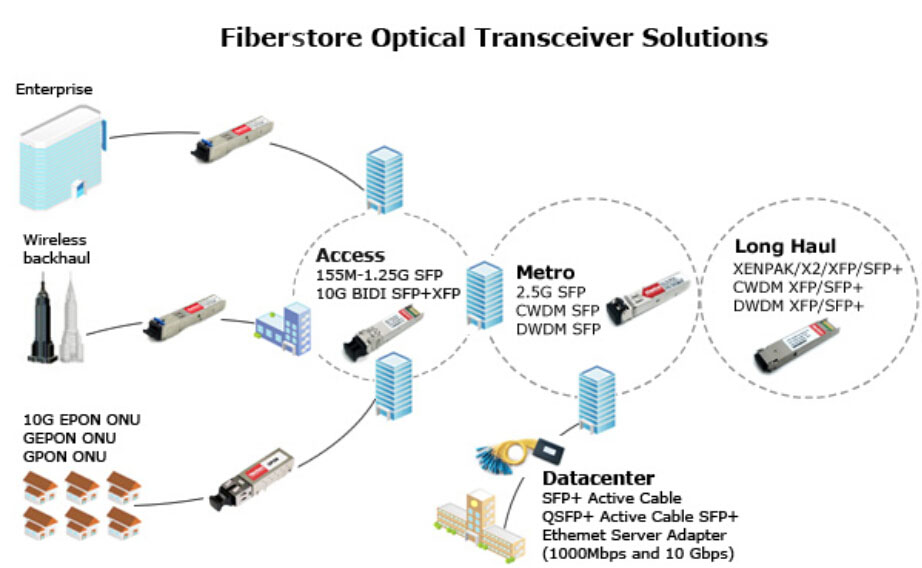
| Part No. | Description |
| SFP-1GT-1MA-HP | HP JD089B X120 compatible 1000BASE-T SFP Copper RJ45 100m |
| SFP-1G85-5MA-HP | HP JD118B X120 compatible 1000BASE-SX SFP 850nm 550m DDM MMF |
| SFP-1G31-10A-HP | HP JD119B X120 compatible 1000BASE-LX SFP 1310nm 10km SMF |
| SFP-1G85-5ME-HP | HP J4858B X121 compatible 1000BASE-SX SFP 850nm 550m MMF |
| SFP-1G85-5MF-HP | HP J4858C X121 compatible 1000BASE-SX SFP 850nm 550m MMF |
| SFP-1GT-1MD-HP | HP J8177C X121 compatible 1000BASE-T SFP Copper RJ45 100m |
| SFP-1G31-10F-HP | HP J4859C X121 compatible 1000BASE-LX SFP 1310nm 10km SFP SMF |
| BLSFP-1G34-10-HP | HP J9143B X122 compatible 1000BASE 1310nmTX/1490nmRX BIDI SFP 10km SMF |
The Fluke 117 is simply amazing multimeter for demanding settings like hospitals and schools and commercial buildings. The Fluke 117 multimeter includes integrated non-contact voltage detection to avoid secondary voltage detection tools for that purpose.
With its integrated non-contact voltage detection and the AutoV/LoZ function preventing false readings caused by ghost voltage, the Fluke 117 Electrician's Multimeter is the ideal multimeter for electricians. The Fluke 117 includes integrated non-contact voltage detection to help get the job done faster.

Compared to other Fluke multimeters it’s quite smaller and compact. The Fluke 117 weights about 400 grams. The Fluke 117 is ergonomically designed to give you a comfort hand holding with a compact size which provides an easy one handed operation off the device.
Fluke 117 FeaturesBy DeusEx (United States)
The Fluke 110 series is Fluke's cheapest "Fluke Branded" line. It's a Fluke so you know you're getting an instrument worth its salt. The 117 is the most feature packed and highest priced in the series. It's a smaller form factor than some of the other Fluke meters. It features all the traditional fields that you'll find on most modern DMMs. Volts AC (True RMS) & DC both to 600V. A full mV range. Resistance, continuity, diode check, capacitence, and frequency. It features Amps AC & DC to 10A however it lacks a mV and uV range since this is an electrician's meter, not an electronics meter. Two more modes it offers are volt alert and LoZ.
By Allan York ( Gardnerville, NV USA )
I bought the Fluke 117 Multimeter as a replacement for my old and very tired Fluke 77 Multimeter. This is a great meter for the price, I love all the new features Fluke has put in. If I have any gripe it's that the leads don't stow on the back like the model 77. If you need a quality Multimeter at a decent price grab one of these.
Where to Buy Reliable Quality Network Test Equipment
To find more common used fiber optic testers from Fiberstore, include optical multimeter, visual fault locator, RJ45 tester, underground wire tracer, bit error rate tester and phone line tester. Fiberstore provide reliable quality fiber testers in accordance with telecom, military, aerospace and other industry standards.